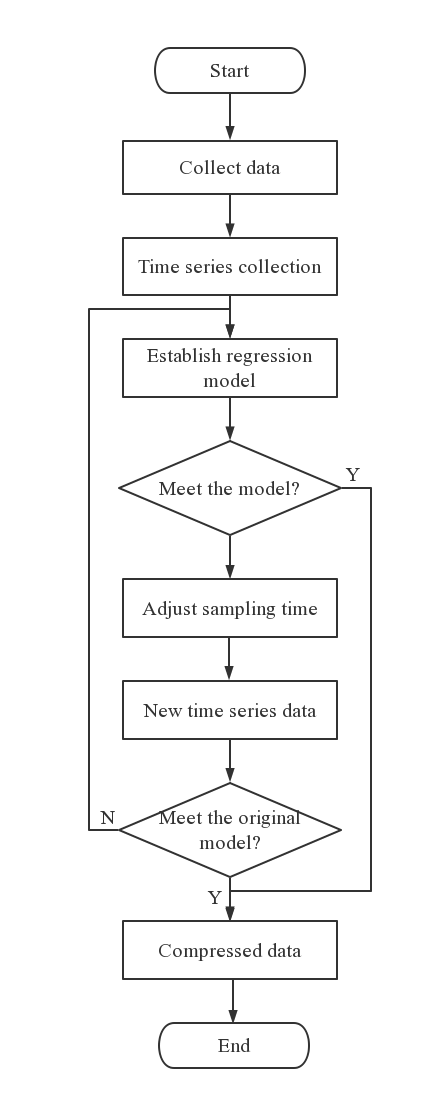1. Introduction
As early as the early stage of the 20th century, there were cases in which doctors learned about patients' conditions and made corresponding diagnosis through telephone. With the continuous advancement of science and technology and information technology, remote consultation, remote Radiology, remote surgery, etc. are developing continuously. Based on the requirements of accuracy, convenience and comfort, researchers have gradually applied wireless sensors to the monitoring system of telemedicine. The joining of wireless sensor network (WSN) has made great progress in the establishment and promotion of telemedicine system, and the telemedicine system is gradually becoming functional and intelligent.
Wireless sensor networks are composed of sensors, sensing objects and observers, and play a role through a large number of micro sensor nodes arranged in the monitoring area. These nodes can collect data, analyze the data, and finally pass it to the observer. Combining the characteristics of wireless sensor networks with medical care and health care, sensor networks have broad development space in the medical field [1].
Many foreign researchers have begun to connect the sensor network with the medical field and have made some achievements. For example, the medical team of Intel has studied the use of sensor networks to monitor and care the health of patients remotely. They use micro sensor nodes placed in the patients' homes to monitor and collect the physiological data of patients. Harvard University and Boston Medical Center try to apply the sensor network to the emergency treatment of patients in or outside the hospital, the treatment of disaster sites and the rehabilitation treatment of paralyzed patients. On the basis of MICa2, Mica Z and Telos sensor node platforms, they developed a special sphygmomanometer, which can not only record the basic physiological data of patients, but also transmit the data to PDA or computer. The process uses wireless network communication as the medium, and the terminal will analyze and process the data. This sphygmomanometer is small and convenient to wear. The MIT auto ID center has made corresponding research findings in the field of health care. They have developed a special Internet system, which can connect different physical entities and call it the "Internet of things". The system is very powerful. It can monitor the physiological data of patients 24 hours a day, share medical records safely, accurately analyze the location of medical equipment, give patients simple symptomatic treatment, and constantly update the displayed data to maintain smooth communication.
At present, many domestic researchers have also successfully applied WSN to the telemedicine monitoring system. Wu Qiuhong designed a remote medical monitoring system based on WSN, which is divided into three parts: wireless body area network, local gateway and remote monitoring center to realize the transmission, processing, feedback and storage of physiological parameters. Cao Jinghua designed an extensible telemedicine system application platform based on WSN, and designed different solutions according to different user needs. Compared with the data collected by traditional methods, the accuracy is higher. Song aijuan designed the wireless network communication technology based on Zig Bee protocol, and used LabVIEW software to display the physiological parameters of the monitoring object, which basically realized the intellectualization and automation of the network. Because these systems are mainly based on hospital monitoring and family monitoring and designed for the needs of some users, they lack comprehensive consideration of network security, energy consumption and reliable transmission [1].
2. Challenges in current applications
Due to the characteristics of wireless sensor, the research of telemedicine monitoring based on wireless sensor is still at the initial stage, and there are still some problems. The research and analysis of the application and challenges of wireless sensor network in telemedicine monitoring is beneficial to the improvement and development of this technology.
In order to realize long-term monitoring in medical applications, wireless sensor networks also need to solve the problem of storage and processing of large amounts of data, and to solve this key problem, compression technology should be adopted. The vital signs data collected by nodes are correlated in time or space, and can be divided into three types, that is, the compression processing of data can be based on time correlation, spatial correlation and space-time correlation. In the practical application of wireless sensor networks, the data compression algorithm should have the characteristics of simple structure and low computational complexity. In the continuous time period, the collected vital signs of patients have similarity.
In the application of wireless sensor networks in the medical field, the patient vital sign data must be safe and cannot be leaked or known by irrelevant personnel. At the same time, due to the particularity of medical data, there are more redundant data in the transmission process, which will consume too much energy of wireless sensor network nodes, cause the nodes to accelerate the death, and ultimately lead to the reduction of the network life cycle. Therefore, a large amount of data collected by nodes need to be compressed before encryption and transmission, so as to reduce the communication overhead of wireless sensor networks. Therefore, on the basis of the linear regression model, the sampling time and the one-dimensional linear regression model are adjusted to make it better applicable to the wireless medical sensor network monitoring system. In this paper, the idea of algorithm optimization for wireless sensor based on compression algorithm is proposed.
3. Assumption of algorithm optimization
The design of wireless medical sensor network mainly includes two aspects. One is the security of patient data. The wireless sensor network is in an open environment, which is easy to cause the leakage of patient information. The traditional encryption algorithm has problems such as high computational complexity and high energy consumption, and is not suitable for the wireless sensor network with limited resources; The second is the compression processing of a large amount of patient data. In the monitoring process of wireless medical sensor network, due to the 24-hour uninterrupted collection of patient vital signs, there are a large amount of data, simple structure, high redundancy, strong real-time performance and low error tolerance. In wireless sensor networks, the energy consumed by node communication is far greater than that consumed by its own processing. Under the condition of resource constraints, it is very difficult to transmit and store a large amount of medical data, which also shortens the life cycle of the network [2].
When the wireless sensor samples the data of the patient's vital signs, the data value is approximately linear with the time. Therefore, an appropriate one-dimensional linear regression model can be established through the time series of the collected data to determine whether the data is compressed. If the collected data value does not meet the linear regression model, the range of sampling time shall be adjusted in time to judge whether the abnormal data value at a certain time has indeed occurred or is changed by interference. When the occurrence of data abnormality is determined, the univariate linear regression model shall be reconstructed and the data of the next time series shall be analyzed. When the data satisfies the univariate linear regression model, the current data is compressed. The algorithm flow is shown in the following figure.
| |
Figure 1. Flow chart of data compression algorithm. | |
The wireless sensor node collects a large number of patient data for a long time. When the change of data value tends to be stable and the fluctuation range is within the allowable range of error, the sampling time is the same as the last time; When the fluctuation range of the data value is large and exceeds the maximum range of the error, the sampling time is shortened, and it is judged whether the data value at the next sampling time fluctuates within the threshold range of the regression line. If it is within the threshold range, the same univariate linear regression model is sampled, and if it is not enough, the linear regression model is reconstructed.
According to the characteristics of medical data, the data is compressed based on the regression model. When the data value does not meet the model, the sampling time is dynamically adjusted to make the transmitted data closer to the change of the real value. Finally, setting the priority of sign data is conducive to achieving more efficient medical monitoring. Different types of data have different degrees of threat to the patient's life. For example, pulse data, if the data value exceeds the safety range, it will lead to the death of the patient and seriously affect the patient's life safety. The data should be transmitted to the monitoring center as soon as possible. In contrast, the temperature data value is too high, and the impact on the patient is less. When the channel is crowded, the pulse data should be transmitted first. Therefore, according to the importance of the sign data, the pulse, blood pressure and body temperature are divided into high priority, medium priority and low priority according to the type of vital signs.
Secondly, in terms of other performance requirements, it is necessary to ensure the requirements such as physiological parameter packet loss rate and transmission processing delay. Among them, in terms of the packet loss rate of physiological parameters, the physiological parameters of patients are an important prerequisite for monitoring and diagnosis. It is necessary to ensure that the collected physiological parameters are transmitted to the monitoring destination as completely and correctly as possible. If some key physiological parameters are not transmitted to the monitoring destination, misdiagnosis and missed diagnosis may occur. The collection of physiological parameters is realized through wireless sensor networks. Wireless communication shows problems such as limited reliability and node off network. In addition, the cache of network nodes is insufficient, and packets that cannot be transmitted in time may be covered. These factors may lead to packet loss. Therefore, the packet loss rate of physiological parameters should be controlled within 10% as far as possible. In terms of transmission processing delay, if the patient has an emergency situation, the monitoring center is required to find it in time and notify the medical staff and the patient. This requires the system to collect, transmit and process the physiological parameters of patients in real time. However, the transmission of physiological parameters and the processing of each link will be delayed, so it is necessary to control the delay within the corresponding time range. The transmission processing delay shall be controlled within 2S as much as possible[3].
4. Conclusion and Prospect
Aiming at the problem of monitoring the patient's vital signs in the application of wireless medical sensor network, this paper uses chaos based wireless medical sensor network block encryption algorithm in the system encryption module. According to the characteristics of high redundancy, large data volume and low error tolerance of patient vital signs data, the data is compressed in the system compression module. The data is compressed in the system compression module. Therefore, the data in the medical monitoring system can be effectively encrypted and transmitted, and is suitable for wireless sensor networks with limited resources.
In a word, with the continuous promotion of information technology and communication technology, telemedicine monitoring system has achieved considerable development in recent years, and to a large extent solved a series of problems in traditional medical services. In order to further promote the effective application of wireless sensor network in telemedicine monitoring system, relevant personnel must constantly study and summarize experience, overcome various problems in practical application, carry out the design of telemedicine monitoring system based on wireless sensor network, and actively promote the healthy and stable development of the medical industry.




